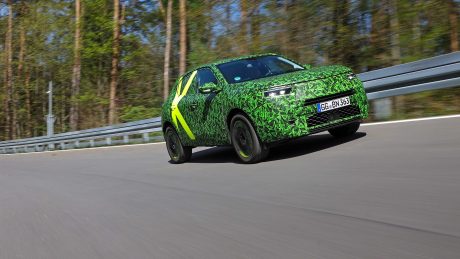The supreme discipline: On the high-speed track in the Test Center Rodgau-Dudenhofen with its steep curves, absolute stability at all speeds is the key.
With typical precision, the German engineers have been putting the finishing touches to the next-generation bestseller. At the Test Center Rodgau-Dudenhofen in Germany, they are currently setting up the new Mokka for optimum acoustic comfort in the interior, excellent driving safety at high speeds and Opel-typical steering and pedal feel. Since February, the Opel experts for chassis, powertrain, electronics and lighting have been using the Arctic winter for the tuning of chassis and assistance systems on frozen lakes and narrow country roads in Swedish Lapland.
The next Opel Mokka generation is a completely new design based on the company’s’s highly efficient CMP multi-energy platform (Common Modular Platform). This modular kit offers maximum flexibility in vehicle development. The CMP also allows the use of purely battery-electric drive as well as internal combustion engines. The customer has the choice. Thanks to the use of high-strength steels, the vehicle weight is low and the body stability is high. The new Mokka weighs up to 120 kilograms less than the previous model – with almost the same wheelbase and tire sizes.
![]()
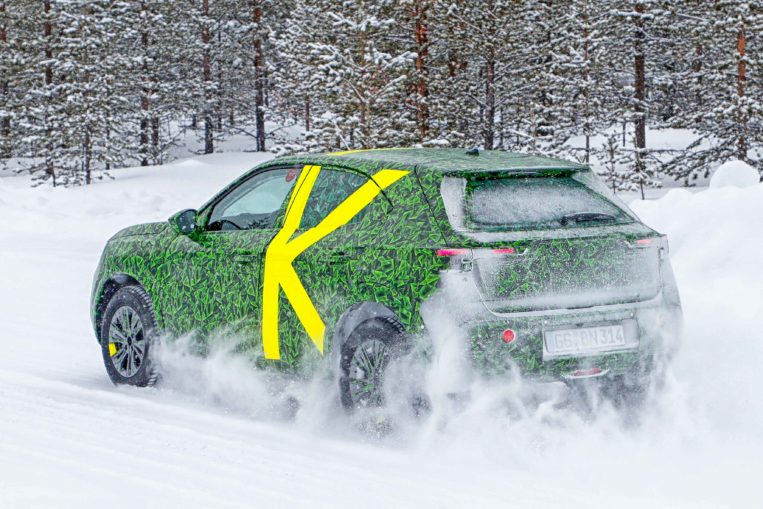
↑ The new Mokka must respond precisely to steering inputs and give good feedback, be comfortable and at the same time have a firm enough ride.
These characteristics must be present under all weather conditions everywhere – also at the icy Arctic Circle. →
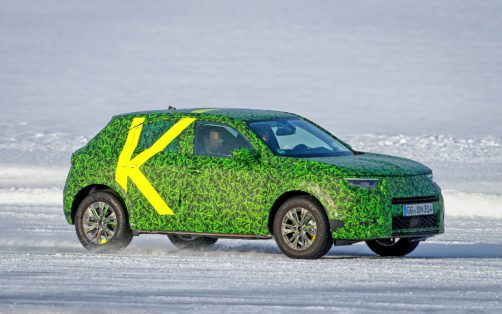
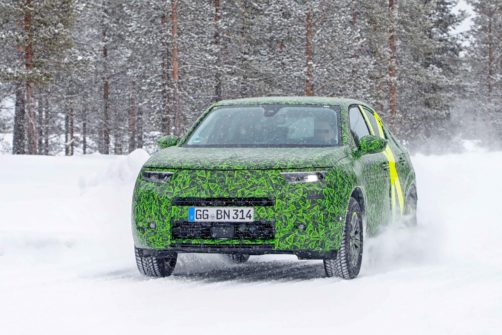
← Parts, components and systems are continuously fine-tuned by the Opel engineers: dampers, springs, steering.
Phase 1: testing and fine-tuning at Arctic Circle
Opel engineer Gunnar Nees never tires of turning lap after lap on ice. He regularly stops for a few minutes. Reaches for the laptop, reads out measured values, logs every kilometer covered. In the vast Arctic wilderness, it is still freezing cold in March. Exactly the right conditions for orchestrating the harmony between ABS, ESP, assistance systems and the rest of the new Opel Mokka’s chassis.
The development cars are still hiding behind a green and black camouflage, with 3D-like graphics that blur the vehicle’s contours. The engineer behind the steering wheel has come to the far north to set up the chassis. Like every Opel, the new Mokka must respond precisely to steering inputs and give good feedback, be comfortable and at the same time have a firm enough ride. An Opel must not display uncontrolled body movements, for example, when the vehicle is driving over a large bump at medium speed. The Opel philosophy calls for safe and relaxing driving on the highway. An Opel must remain easily controllable in all situations and be fun to drive at the same time.
![]()
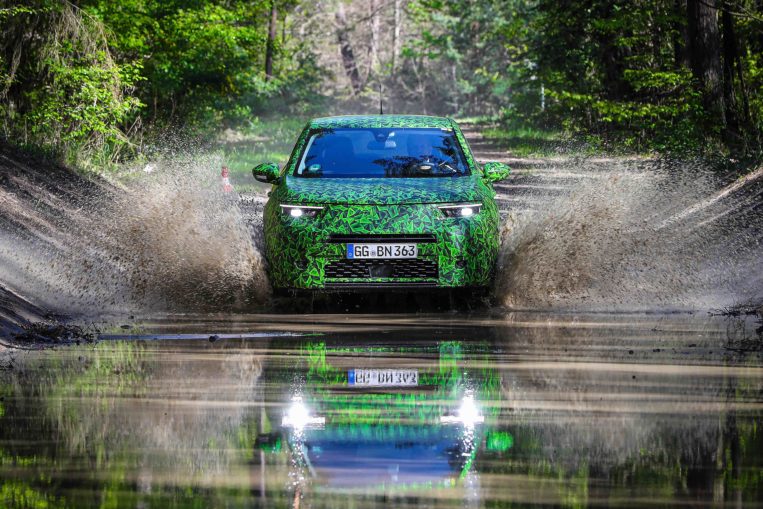
↑ Test Center in Rodgau-Dudenhofen: Opel engineers have tested here for decades and built up a huge wealth of experience.
An Opel must not display uncontrolled body movements, for example, when the vehicle is driving over a large bump at medium speed. →
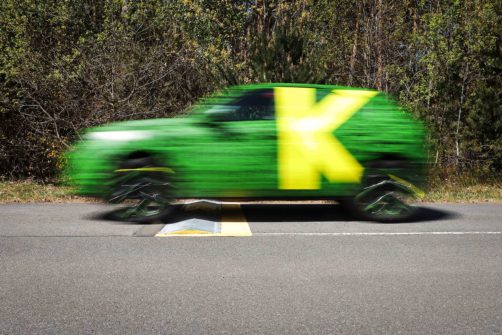
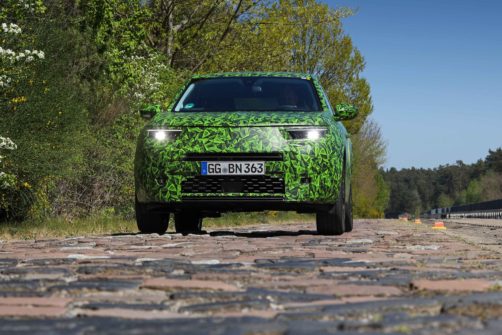
← Here, not far from the Opel headquarters in Rüsselsheim, the tracks are replicas of the trickiest road surfaces in Europe.
![]()
Phase 2: high-speed drivingon German test tracks
Back in Germany: the same test engineer pilots the Mokka-prototype on home ground at the Rodgau-Dudenhofen Test Center. Karsten Bohle, the project coordinator for the second-generation Mokka, joins Gunnar Nees. “We are all looking forward to seeing the new mocha on the road in customer hands. The test drives are running like clockwork, also because our new baby, with its low weight and compact external dimensions, reacts well to adjustments. Handling and comfort are great. The mocha is a joy to drive, ”said Bohle,“ the development work has been great fun. ”
The new mocha is ready to take its final exams at the Test Center. While shaken, ride comfort and interior acoustics must remain unstirred – not even by the torture track. Here, not far from the Opel headquarters in Rüsselsheim, the tracks are replicas of the trickiest road surfaces in Europe. Opel engineers have tested here for decades and built up a huge wealth of experience. The engineers repeatedly adjust springs and dampers, the balance between responsiveness and sporty precision continuously improved. The new Mokka features particularly low road noise for optimum acoustic comfort, which the high-quality materials in the interior further increase. Squeaks and rattles are taboo.
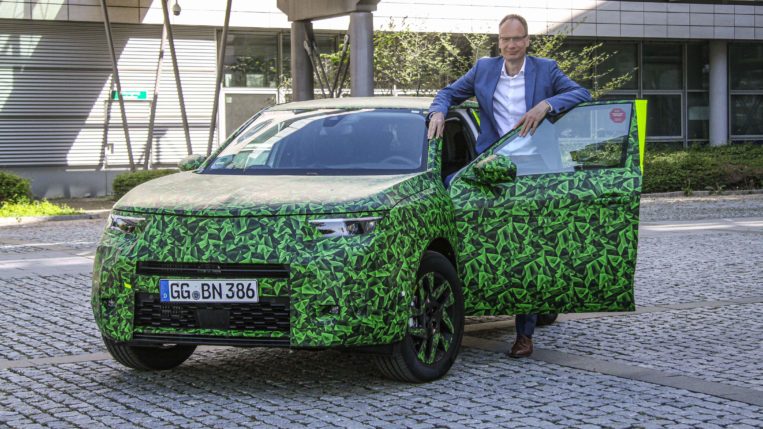
↑ Top priority: Opel CEO Michael Lohscheller was also on a test drive with the new Mokka.
The steering and suspension get their Opel “feel” on the Dudenhofen handling course. Two tie rods at the McPherson strut turrets are standard equipment; they provide further stiffness at the front end, adding a touch more precision and agility. The new Mokka turns into corners eagerly, is easy to handle at the limit and the assistance systems function perfectly. Then comes the ultimate discipline – the high-speed oval with its steep banking, followed by the long straight. This test demands rock-solid stability at all speeds.
In real life, it also results in a huge safety benefit when taking avoidance maneuvers at lower speeds. The Opel engineers only award their seal of approval for the autobahn when they return satisfied from the high-speed oval. The new Opel Mokka has already passed this test with flying colors. However, testing, testing and yet more testing will continue until the summer. When the Mokka has achieved production readiness, cars will start rolling off the assembly line at the end of the year. Customers can look forward to a very agile second-generation mocha, which will be available in dealerships from early 2021. Until then, the testing continues at full speed.
May 2020
Text: Roland Korioth, photos: Opel
